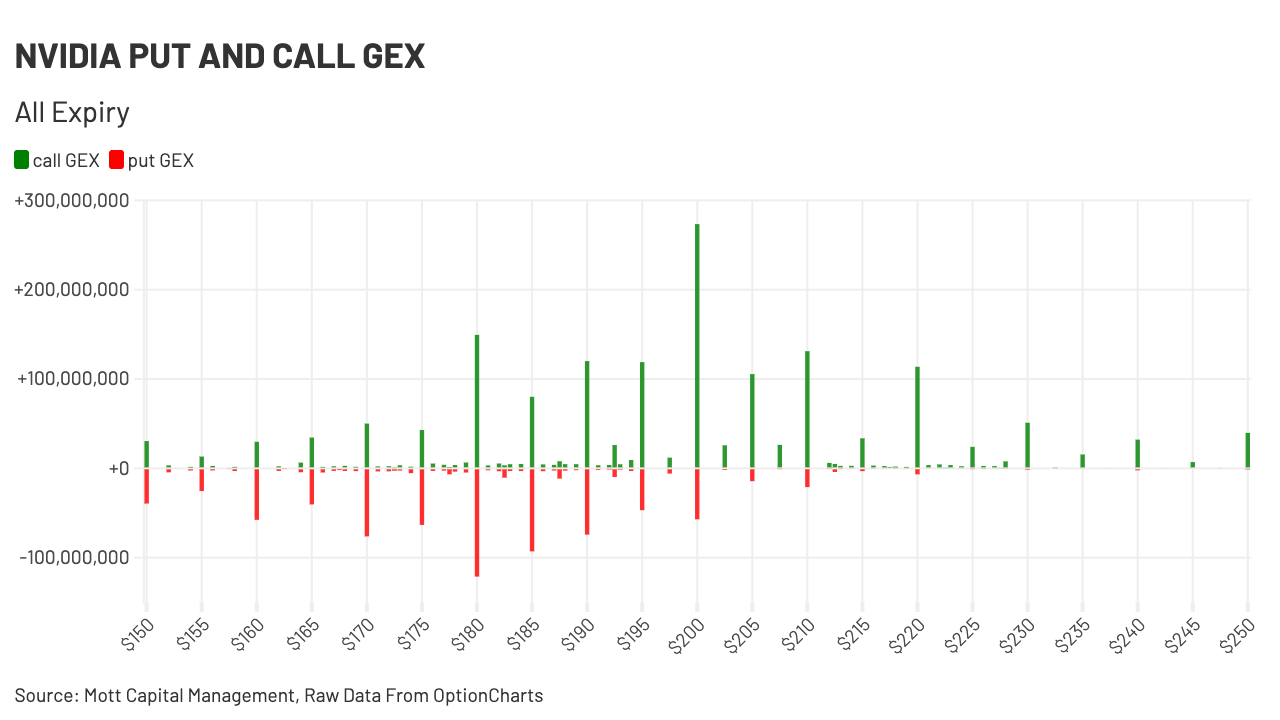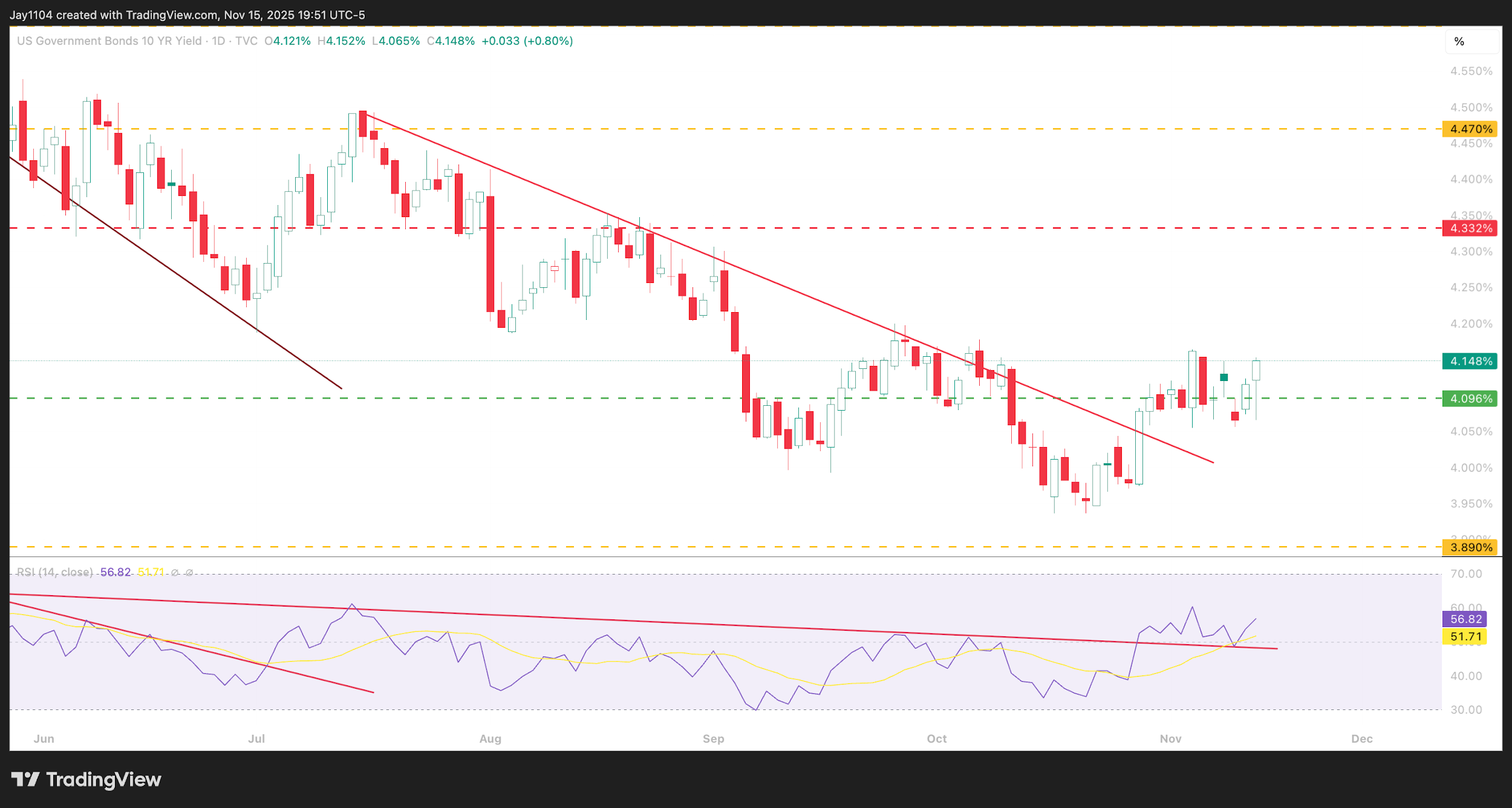Market Braces for NVIDIA Results and Critical September Jobs Report
It will be a busy week in the US with the return of economic data and NVIDIA’s earnings results.
It will be a busy week in the US with the return of economic data and NVIDIA’s earnings results, which may lead to elevated levels of volatility, building on what we have already seen over the past two weeks of trading, during which the market has been fluctuating and struggling slightly in the aftermath of earnings season.

Nvidia Earnings
Most of the market focus will occur on Wednesday, 19 November, after the close of trading, when NVIDIA is expected to report earnings increasing by 54.1% to $1.25 per share on revenue growth of 56.4% to $54.9 billion for the fiscal third quarter of 2026. Gross profit margins are forecasted to slip to 73.5% from 75% a year earlier. Naturally, everyone will also be watching NVIDIA’s guidance closely, as the company is well known for surpassing analysts’ expectations. Analysts anticipate fiscal fourth quarter earnings to rise by 60.3% to $1.43 per share, with revenue expected to grow by 56.3% to $61.5 billion, and gross margins to expand to 74.5% from 73.5% a year earlier.
None of this is surprising because NVIDIA has historically beaten analysts’ estimates by $2 to $3 billion in current-quarter revenue and then guided $2 to $3 billion above analysts’ estimates for the following quarter. This pattern has been consistent for some time. In this case, a beat-and-raise would not surprise anyone unless it deviates significantly from the norm established over recent quarters.
Unfortunately for the bulls, NVIDIA is positioned very similarly to Netflix and Meta following their results, which led those stocks to fall. For Nvidia, there is a large build-up of positive gamma, with a significant gamma level at $200, which may act as a key resistance area. Additionally, the stock is in a positive gamma regime, meaning that as the shares rise, the move becomes harder to extend because market makers generally become sellers. With that large call wall at the $200 level, there are likely to be many call sellers in that region. This means it would take exceptionally strong results and exceptionally strong guidance — exceeding already elevated expectations — for the shares to trade above $200 following the release. It also means that all the calls built up above $200 are likely to lose substantial value once implied volatility collapses after the announcement. That could result in the shares being sold after the results and drifting lower, and eventually, market makers could be forced to sell if the shares begin to fall below the $180 to $185 range.

(Source: OptionCharts)
Past performance is not a reliable indicator of future results.
Jobs Report
The other major event will take place on the morning of 20 November at 8:30 a.m., with the release of the September employment situation report. Estimates currently suggest 22,000 jobs were created in September, with the unemployment rate at 4.3%. Average hourly earnings are forecast to increase by 0.3% month-on-month and 3.7% year-on-year.

(Source: OptionCharts)
Past performance is not a reliable indicator of future results.
The jobs report is expected to have the greatest influence on whether the Fed cuts rates at its next meeting. Although we do not yet know if we will receive an October jobs report, we do know that the market has largely been pricing out a rate cut and sees roughly a 50–50 chance of a cut in December. A report that meets or exceeds expectations would be a notable improvement over what we last saw in August and would likely give the Fed more confidence that the labour market is beginning to show signs of recovery or, at the very least, stabilisation. That would probably reduce the chances of a rate cut even further and would likely push the yield curve significantly higher across the curve, with the 10-year potentially starting to rise again, having already shown signs of breaking out and contributing to a steeper curve overall. At present, the 10-year rate is around 4.15% and could return to 4.3% on a stronger print, the next major resistance area.

(Source: OptionCharts)
Past performance is not a reliable indicator of future results.
Meanwhile, the 2-year also appears positioned to move back towards 3.8%. Therefore, the outcome of this jobs report is likely to have a substantial impact on the direction rates take, especially if it comes in better than expected.

(Source: OptionCharts)
Past performance is not a reliable indicator of future results.